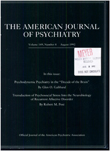Late luteal phase dysphoric disorder in young women
Abstract
The authors determined the prevalence of late luteal phase dysphoric disorder in 217 university women aged 17-29 years. Unaware of the focus on premenstrual syndrome (PMS), the participants rated DSM-III-R symptoms of late luteal phase dysphoric disorder over 90 days. Using a 30% or greater premenstrual change as an index of luteal variation, the authors found that 10 women (4.6%) met the symptom criteria during two menstrual cycles. Compared to 25 young women seeking treatment for PMS who met the same diagnostic criteria, the 10 women from the university sample reported significantly less fatigue and impaired concentration and somewhat less severe depression and overall symptoms.
Access content
To read the fulltext, please use one of the options below to sign in or purchase access.- Personal login
- Institutional Login
- Sign in via OpenAthens
- Register for access
-
Please login/register if you wish to pair your device and check access availability.
Not a subscriber?
PsychiatryOnline subscription options offer access to the DSM-5 library, books, journals, CME, and patient resources. This all-in-one virtual library provides psychiatrists and mental health professionals with key resources for diagnosis, treatment, research, and professional development.
Need more help? PsychiatryOnline Customer Service may be reached by emailing [email protected] or by calling 800-368-5777 (in the U.S.) or 703-907-7322 (outside the U.S.).



